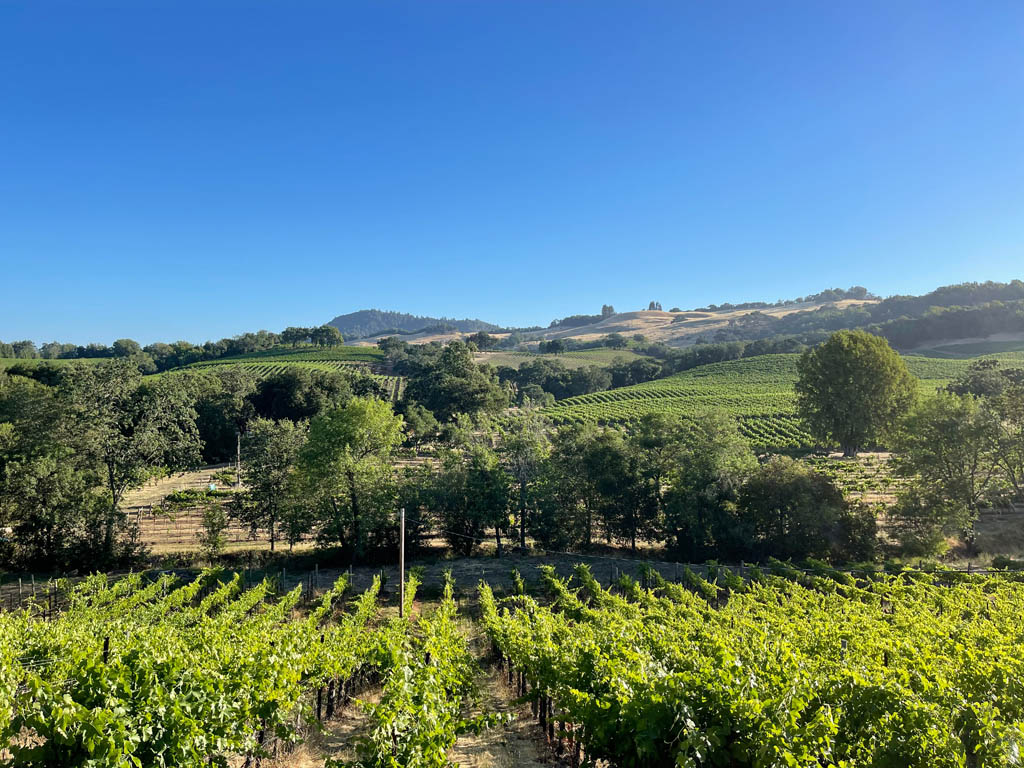
This past June, my friends, Tracey Thomas, Owner/Publisher of VENÜ Magazine, her husband, Matthew Sturtevant, and I enjoyed our first visit to California wine country since COVID. It was wonderful to see old friends and to make wonderful new friendships. As excited as we were to be in wine country, it was bittersweet. We couldn’t help but notice mile after mile of devastation from the wildfires that have ravaged the area. There literally was not a person we met that wasn’t personally affected by the fires or the pandemic.
Sonoma
We began our adventures in Sonoma, starting in Healdsburg, a storybook town in northern Sonoma County. It has an air of sophistication yet does not lose the fact that its main industry center around winemaking, which, as all the winemakers told us, is farming—growing and nurturing the grapes that are crafted into the next great vintage. Napa and Sonoma welcome visitors from around the world to experience not only the wines, but the food—which reflects the local bounty. Napa and Sonoma have given birth to and attracted some of America’s finest chefs, who proudly pay homage to this region.
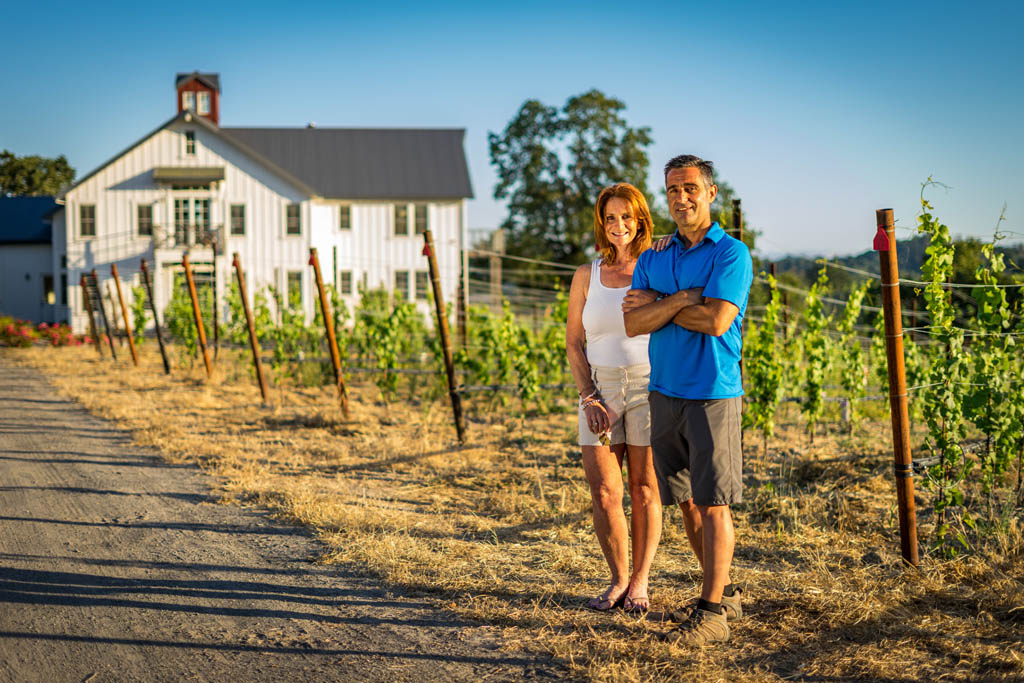
Marla and Geoff Bedrosian at their estate in the heart of Russian River Valley’s Middle Reach, founders of Domaine de la Rivière wines.
In Healdsburg, we stayed with friends Marla and Geoff Bedrosian at their gorgeous 25-acre estate in the heart of Russian River Valley’s Middle Reach, where the grapes are home-grown and crafted into Domaine de la Rivière wines. The Russian River Valley is a narrow stretch of land that runs along the Russian River’s banks, known for its mix of fog and sun, promoting a long, well-balanced growing season and wines with rich, velvety fruit flavors. The Bedrosians fell in love with the area after many visits, and purchased their property in 2011, selling their grapes at first, but after a few years and extensive involvement nurturing the vines, they began creating their own wines, employing the expertise of vineyard manager Matt Reilly and winemakers Kale Anderson and Erin Miller from Twomey Cellars. Their boutique wines include luscious Pinot Noir, Chardonnay, and Rosé. While the wines were phenomenal, it’s all about the people—being guests at our friends’ home, playing with their Labrador puppies Windsor (named after the nearby town) and Bear while sipping wines on the sun-drenched back terrace overlooking the shimmering pool, golden vineyards, and setting sun was magical!
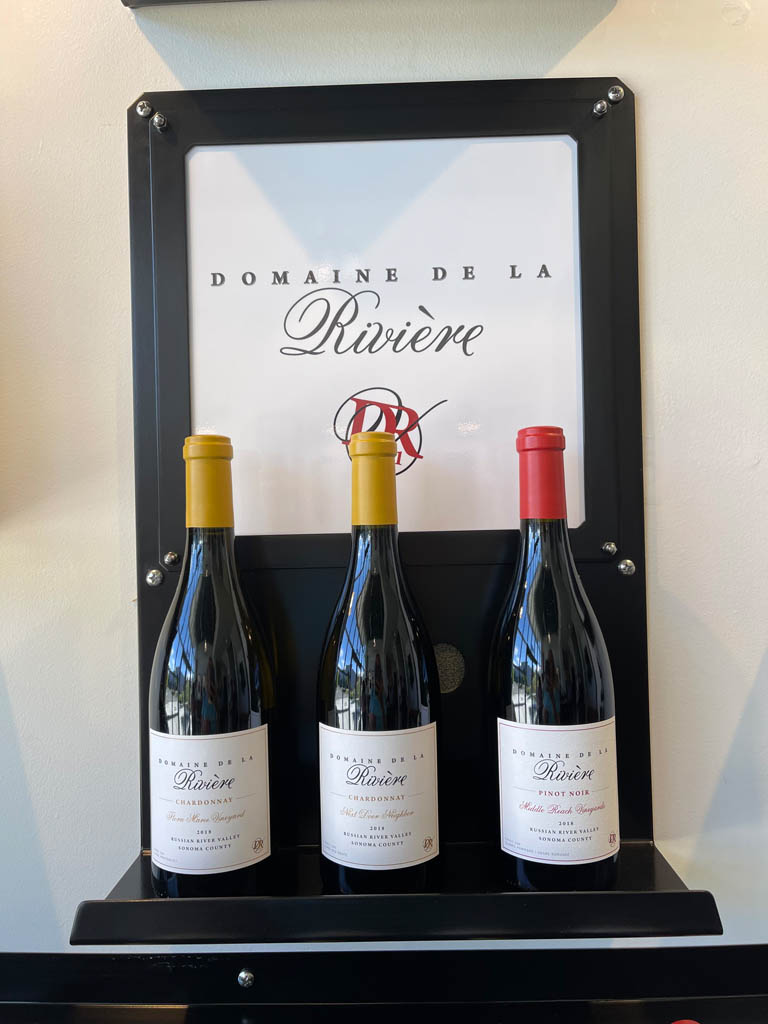
Domaine de la Rivière
It helps to know Shari Gherman, President and Co-Founder of the American Fine Wine Competition in South Florida, of which we are a media partner. Shari helped us organize our winery visits, seamlessly blending the best wines in Napa and Sonoma with our dining plans.
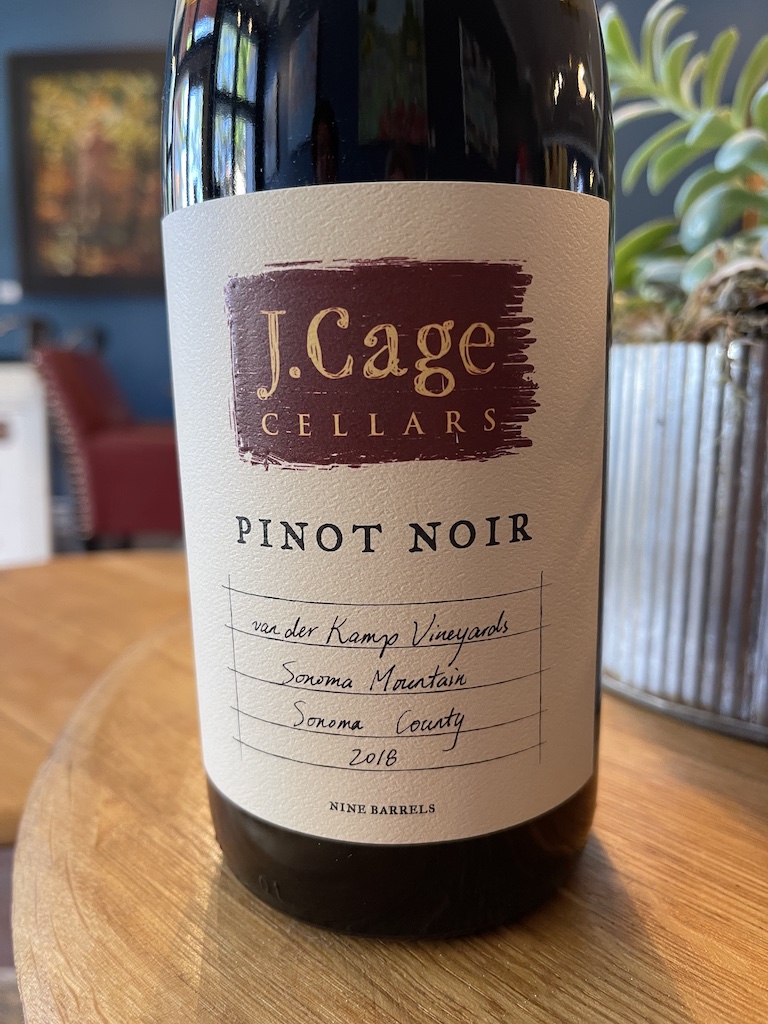
J. Cage Cellars
We enjoyed visiting the following wineries and meeting many passionate folks behind these excellent wines. J. Cage Cellars in downtown Windsor, is a true family affair by Roger and Donna Beery, transplants from Austin, Texas. For the Beery’s, winemaking is their “second act,” Donna a “recovering CPA” and Roger involved in radio and a well-known wine blog. The couple started visiting Sonoma in the 1980’s and fell in love. Their passion for wine rubbed off on their kids—son Conch came in 2015 as their winemaker, while the Beery’s began by consulting with Adam Lee of Siduri. 2022 marks their 14th vintage—like many, they became captivated by Sonoma and never left. We enjoyed Sauvignon Blanc, which mimicked a French Sancerre from grapes which pre-date prohibition. The Van Der Kamp Pinot Noir from 1,600’ elevation on Sonoma Mountain highlighted juicy black fruit, rose petal, and forest floor on the palate—a Pinot lovers Pinot!
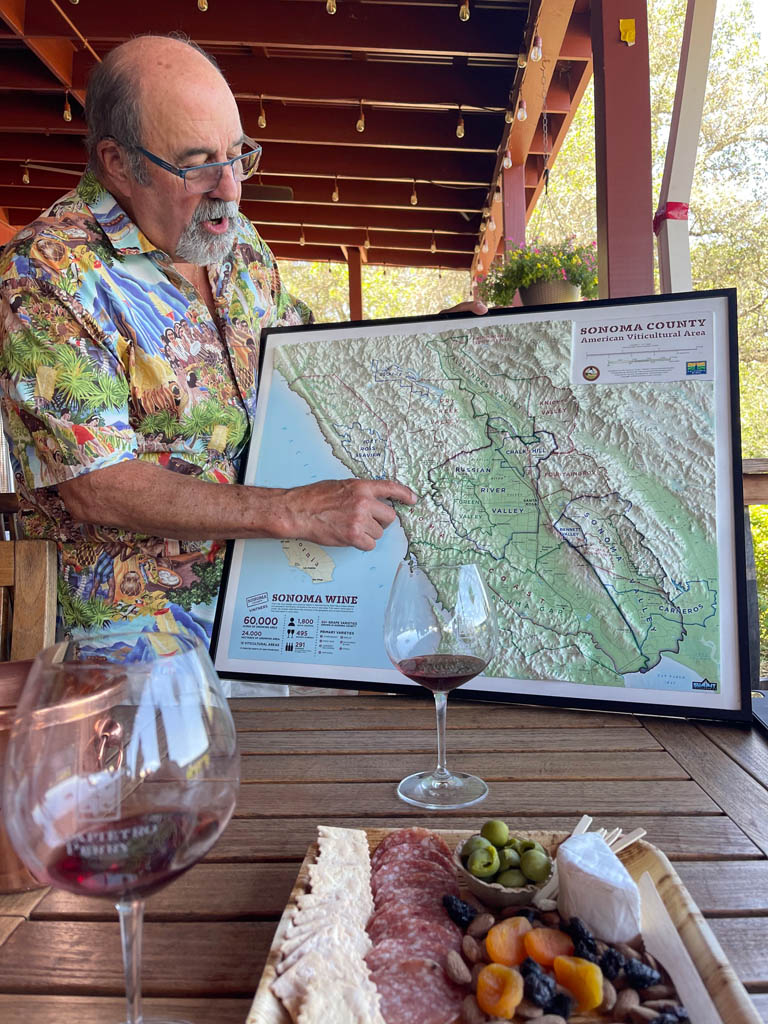
Ben Papapietro showing us the towns in Sonoma County
Papapietro Perry, in the heart of Dry Creek Valley was founded in 1998 by Ben and Yolanda Papapietro and Bruce and Renae Perry. Like many successful ventures, Papapietro Perry Winery was hatched in a garage, producing wine for a handful of friends and having fun. Word spread and both embraced that this should be more than a hobby. Ben and Bruce took jobs at area wineries and learned all they could; they soon realized the wines they were making could compete with other premium California Pinot Noirs. They purchased a production facility in Sonoma and Papapietro Perry was born. Their approach to winemaking was and remains minimalist. “We make wine that we want to drink. We take our wines seriously but not ourselves,” said Ben. Sadly, Bruce passed away earlier this year, but the proud legacy of Papapietro Perry continues in the wine, food, and hospitality, right down to a delightful tasting with Ben and being greeted by Nola, the Perry’s winery dog.
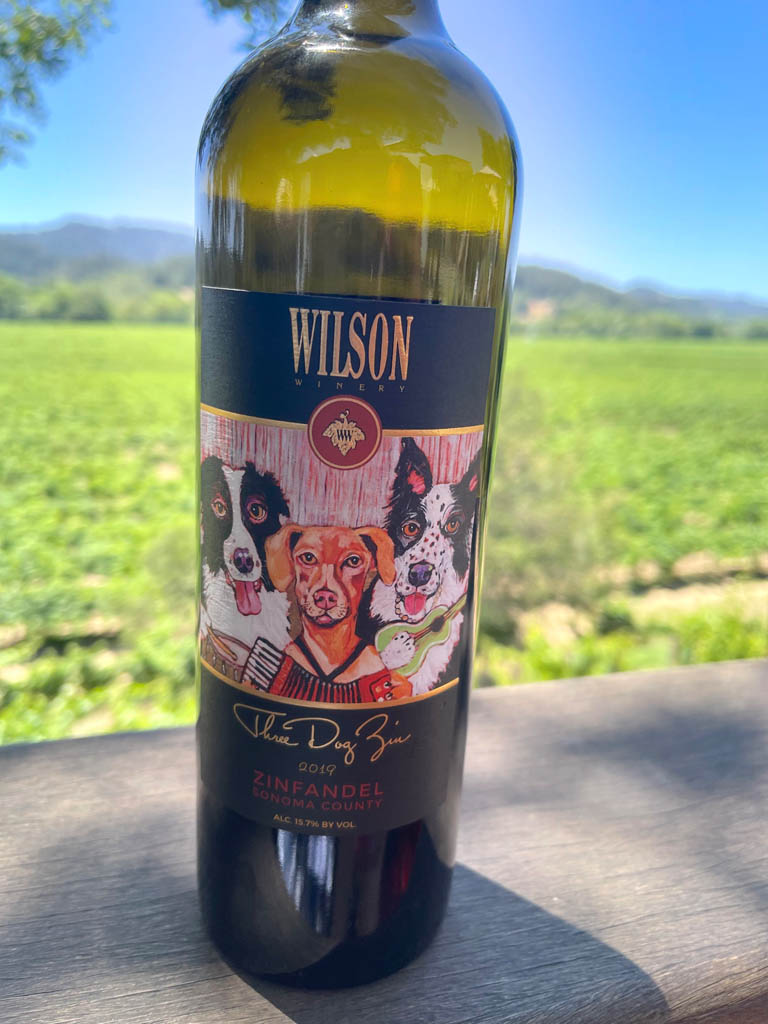
Wilson Family
Wilson Family, also in Dry Creek, was founded in 1993 by Ken and Diane Wilson. The winery’s barn is one of the oldest structures in Dry Creek Valley, and has been lovingly restored to provide a state-of-the-art venue for their award-winning winemaking. Diane Wilson started her winemaking career by winning Best of Class for her wine. The instant success she experienced with her first vintage has continued for over twenty years, resulting in dozens of medals. Although she learned the basic elements of wine chemistry as a Biochemistry major in college, she credits her hands-on learning along with relying on her senses during the production process to know when it’s time to blend or bottle. The family planted their first vineyards high in the mountains of the northern part of Dry Creek, naming their vineyards after their children. Today, each of their children has a role in the business.
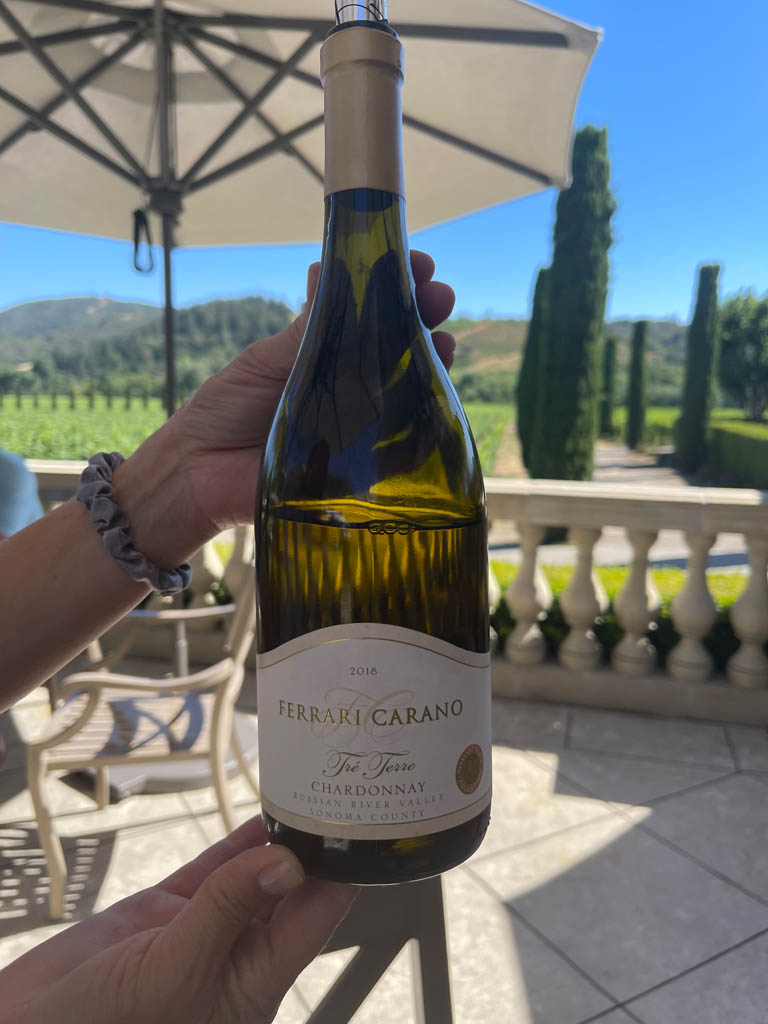
Ferrari-Carano Winery
Ferrari-Carano Winery is one of Sonoma’s most recognized producers. Located in Dry Creek Valley and home to Ferrari-Carano’s Villa Fiore Wine Shop & Tasting Room, the Estate Winery was built in 1981 and focuses on producing Ferrari-Carano’s stellar white wines. The grapes are harvested at night, when temperatures are the coolest, resulting in crisp and intense fruit flavors. Ferrari-Carano has two acclaimed winemakers—Sarah Quider oversees whites and Rebecka Deike oversees reds. I highly recommend enjoying “La Colazione Italiana” (Italian-style Sunday Wine Breakfast/Brunch)—sit outside on the lovely Sycamore Grove terraces overlooking gardens and beautiful estate and enjoy a flight of the reserve wines with a seasonal, Italian-inspired menu featuring dishes prepared with ingredients from the estate gardens.
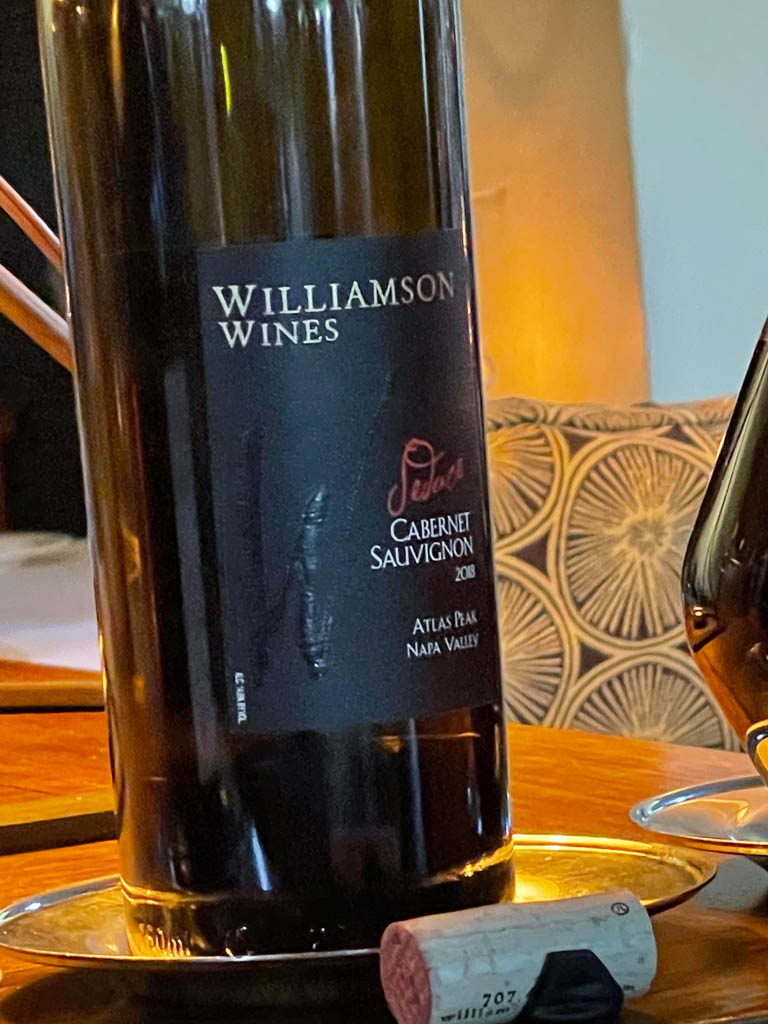
Williamson Wines
Williamson Wines in downtown Healdsburg is known for their full flavor due to the exceptional fruit grown in their twenty-plus vineyards located in specific sites across Napa and Sonoma, as well as their passion for pairing food with wine. The winery and vineyards are sustainably managed to minimize chemical use so these natural wines are produced with minimal intervention retaining the integrity of flavor and sense of place. Bill and Dawn Williamson are 4th generation winemakers whose family established their own vineyards in Australia in 1919. In 1980, the couple came to California for a business trip, visited Sonoma, and decided to stay! Sam Williamson (their son) is the winemaker, who produces wines from sustainably farmed vineyards without additives. Their low sulfite content reduces the risk of histamine headaches, and not using any animal products qualifies them as vegan. The most unique wine in the Williamson portfolio is the Sparkling Shiraz, with deep purple color, made in the traditional Méthode Champenoise.
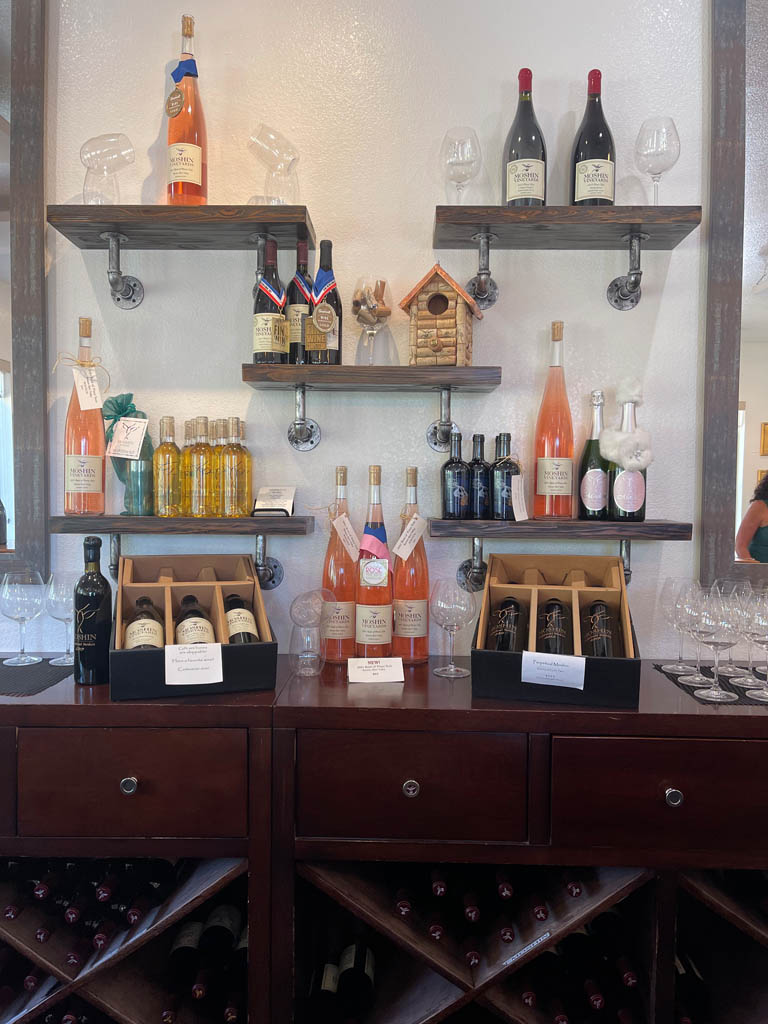
Moshin Vineyards
Moshin Vineyards, in the heart of the Russian River Valley was founded by Rick Moshin, a San Jose State University math instructor who built Moshin from the ground up. Today, you can still find Rick tending vineyards, tasting barrels in the cellar, conducting virtual wine events, building furniture for the tasting room, or making repairs. Since 1989, Rick has been producing natural terroir-driven and delicious wines, focusing on sustainable vineyard practices followed by light-handed fermentation techniques—utilizing native yeasts, no additives, and the gentle movement of gravity from the tank to the barrel and bottling line. The early 1990’s found Rick teaching mathematics at San Jose State during the week and farming his 10-acre Pinot Noir vineyard on the weekends, connecting with local winemaking icons and grape growers such as Davis Bynum, Gary Farrell, and Joe Rochioli, gleaning knowledge, grape cuttings and even selling some of his own grapes to Davis Bynum for a Bynum-Moshin bottling. These deep roots have built a solid foundation upon which Moshin Vineyards has grown to 25 acres and garnered critical acclaim.
Next on our Sonoma itinerary was a visit to the town of Sonoma and the Carneros district, at the southern end of Sonoma County before heading to Napa.
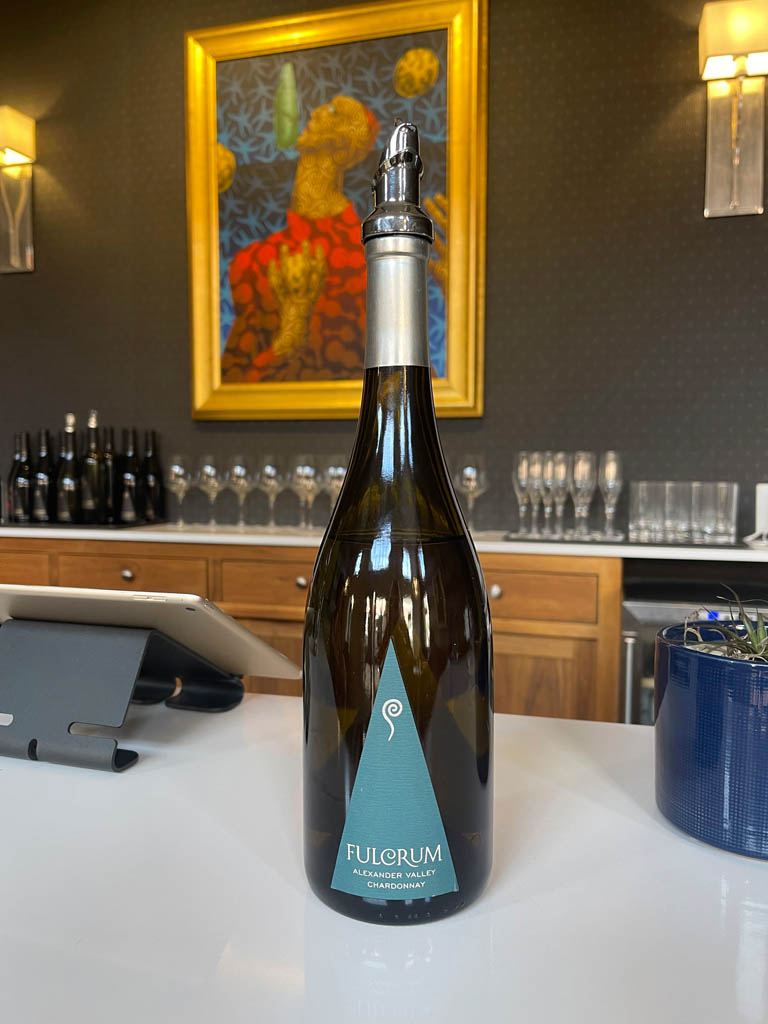
Fulcrum
Fulcrum, whose tasting room is in downtown Sonoma began in 2006 as a hobby by David Rossi from New Jersey, who attended UC Davis to study winemaking. Fulcrum’s focus is on Pinot Noir, currently producing 2,000 cases, and sourcing grapes from all over California. We tried the 2020 Brut Rosé of Pinot Noir, which features notes of melon, white pepper, and strawberries. The 2019 Pinot from Petaluma Gap, which is known for onshore wind which nails the vineyard, stressing skins, allowing grapes to thicken and have a longer hang time, more fruit, and darker, bolder fruit was light and luscious. Pinot Noir is considered the toughest grape to grow, preferring short warm days and cool nights to ripen and preserve the fruit.
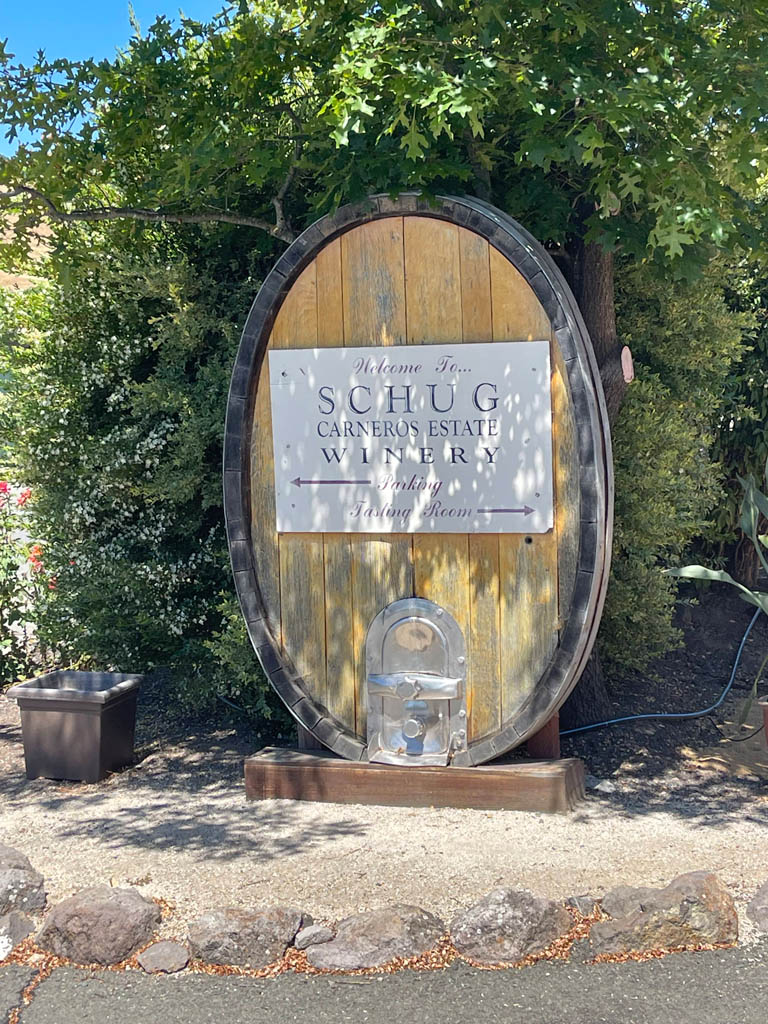
Schug Carneros Estate
Schug Carneros Estate began by Walter Schug in 1980 and spans 50 acres of Pinot Noir and Chardonnay. Carneros is located just north of San Pablo Bay and is known for its breezes—the only AVA which spans both Sonoma and Napa Counties. The adjacent hillside acts as a wind tunnel, which cools and stresses the grapes, resulting in thicker skins and more full-bodied wines. Walter Schug was the founding winemaker for Joseph Phelps before starting his own winery. Today, the family is in its third generation, with Walter’s son, Axel Schug as Managing Partner, and his wife Kristine, a graduate of the CIA at Greystone whose cuisine pairs exceptionally with the family’s wines. German-born winemaker Johannes Scheid was handpicked for a 2009 internship at Schug by Walter, eventually becoming head winemaker, and is dedicated to preserving the legacy of terroir-driven European-style Pinot Noir and Chardonnay. The 2021 White Pinot, Ricci Vineyard was one of the most unique wines we tried all week, where grape skins were briefly put in the barrels to add complexity, resulting in a bright, delicate wine with stone fruit flavors and honeysuckle nuances. Both the 2019 Heritage Chardonnay and the Heritage Reserve Pinot Noir with its rose and quince quality, paired beautifully with Chef Kristine’s charcuterie.
Napa
Continuing through Carneros, we crossed into Napa County.
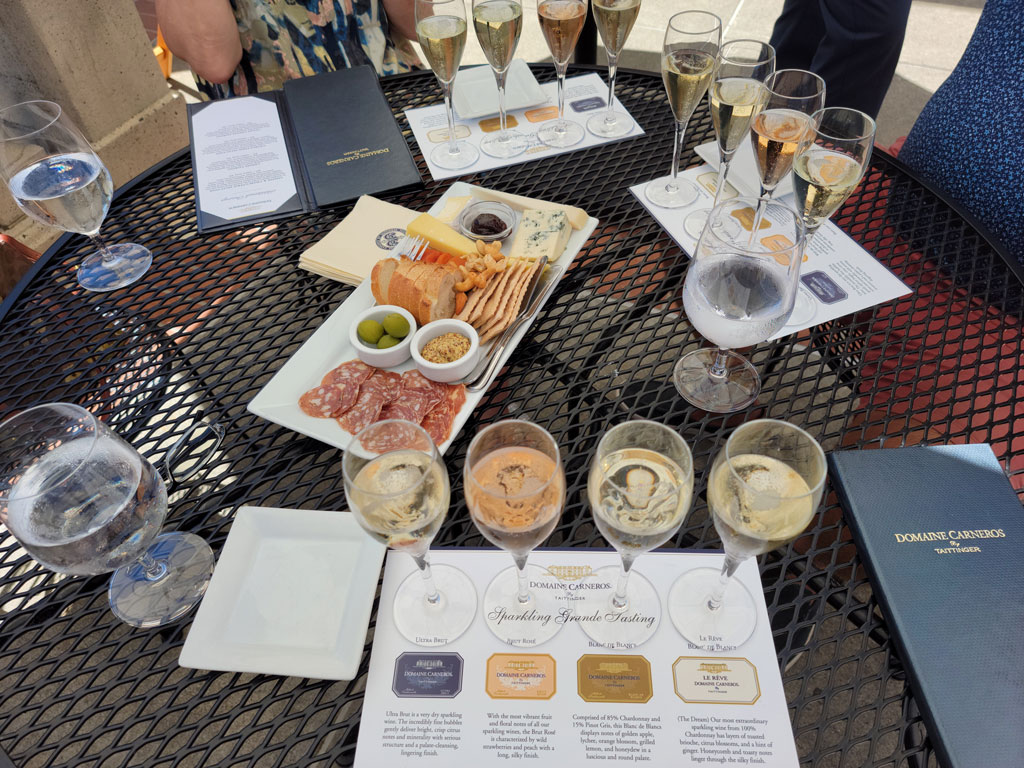
Domaine Caneros
Our first stop, Domaine Carneros is known as a small grower-producer of Méthode Traditionelle sparkling wine, Pinot Noir, and their breathtakingly beautiful Château overlooking the sun-drenched vines of Carneros. Founded by the noble family behind Champagne Taittinger, Domaine Carneros was established in 1987 when Claude Taittinger selected a 138-acre parcel in the heart of Napa’s Carneros district, wisely choosing Eileen Crane-often referred to as America’s doyenne of Sparkling Wine, to oversee the development of the Taittinger style in Carneros. Eileen Crane spoke of the estate’s wines in terms of “balance, depth of flavor and wonderful finish; great aroma, elegant style and little, tiny bubbles. Classic. Sophisticated. Timeless. Think Audrey Hepburn in a little black dress.” In 2020, after 33 years, Crane passed the torch to a new CEO, Remi Cohen, who brings two decades of experience in all facets of the wine industry to Domaine Carneros. Their sparkling wines range from the classic vintage-dated Brut cuvee to the luxury Le Rêve Blanc de Blancs. All the fruit comes from their six estate vineyards comprising 400 acres in Carneros.
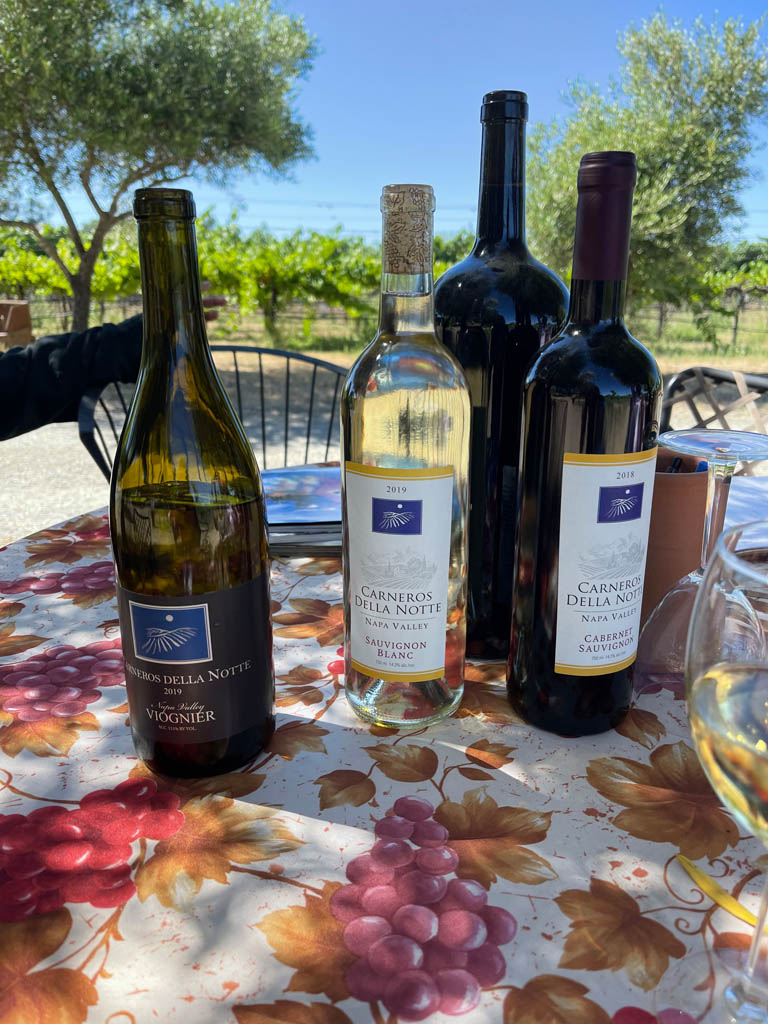
Caneros Della Notte
Carneros della Notte was founded in 2003 by wine.com founder David Harmon, whom we met years ago at Florida Winefest in Sarasota. His Pinot vineyard is chemical free and the grapes are harvested by hand and exclusively at night while the juice chemistry is more stable. Carneros della Notte uses a glow-in-the-dark wine label to further articulate the winery’s unique approach to Pinot Noir production. Engaged in viticulture and hands-on farming, Dave commits himself to the vines throughout the growing season, doing labor-intensive management and timely harvest. The result is balanced, fruit and spice-based wines with the structure and depth to age gracefully. David Harmon is also the founder of Own a Napa Vineyard, where you are invited to purchase your own vine(s) for the year, attend a harvest party, and have bottles made with your own labels with grapes from the year’s harvest.
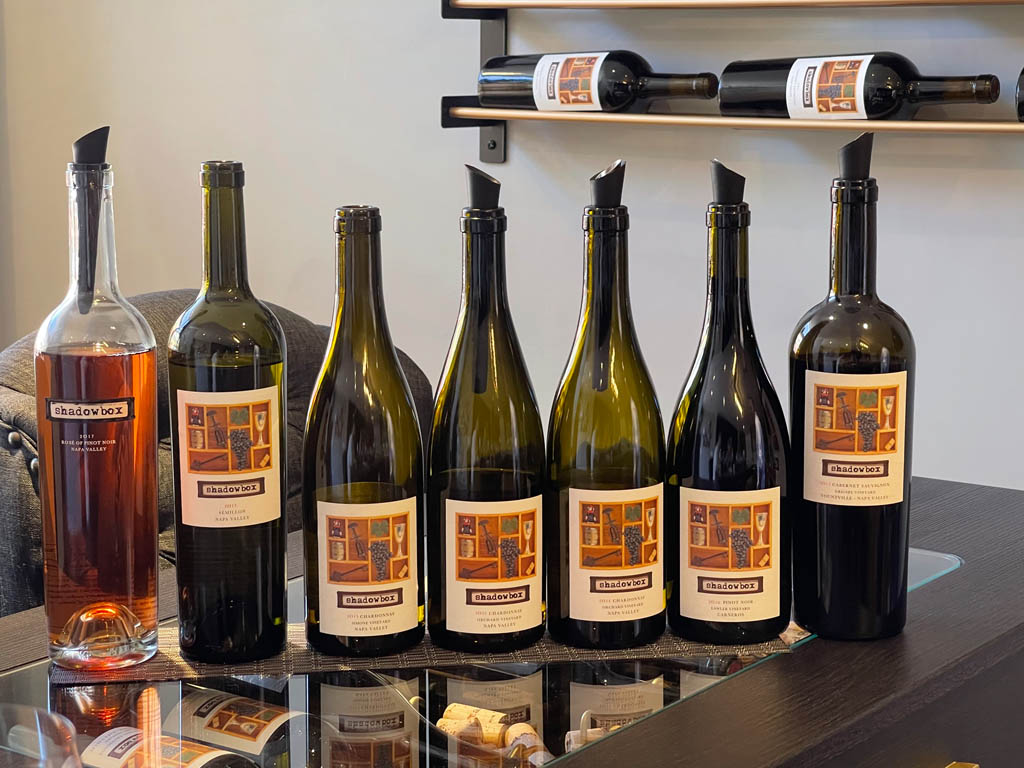
Shadowbox
Shadowbox Cellars in downtown Napa began as a passion project for Founding Vintners Monty and Sara Preiser and Ira and Eydie Holz. Today, Shadowbox is known for age worthy Cabernets, Bordeaux Blends, Chardonnay, Sémillon, and more, producing small lots of acid-driven and food friendly wines made from grapes sourced from vineyards in Napa and Sonoma counties as well as Lodi, Paso Robles and the Sierra Foothills. Monty Preiser is a well-accomplished trial lawyer, Sara a spokesperson for DuPont and women’s fashion. After they became empty-nesters in South Florida, they decided to write about food and wine, which led them to Napa, becoming recognized wine writers and founders of The Preiser Key, the most complete guide to Napa wineries and restaurants. Ira and Eydie Holz share this love and appreciation for wine. Eydie works in interior design and Ira was a longtime member of the Chicago Board of Trade and The Chicago Board Options Exchange before joining the Preisers in 2009 to create Shadowbox. Justin, Monty and Sara’s son was Director of Operations for The Preiser Key before becoming winemaker at Shadowbox. His philosophy is “Begin with fantastic vineyards that display the best characteristics for a particular variety, then, don’t screw it up.”
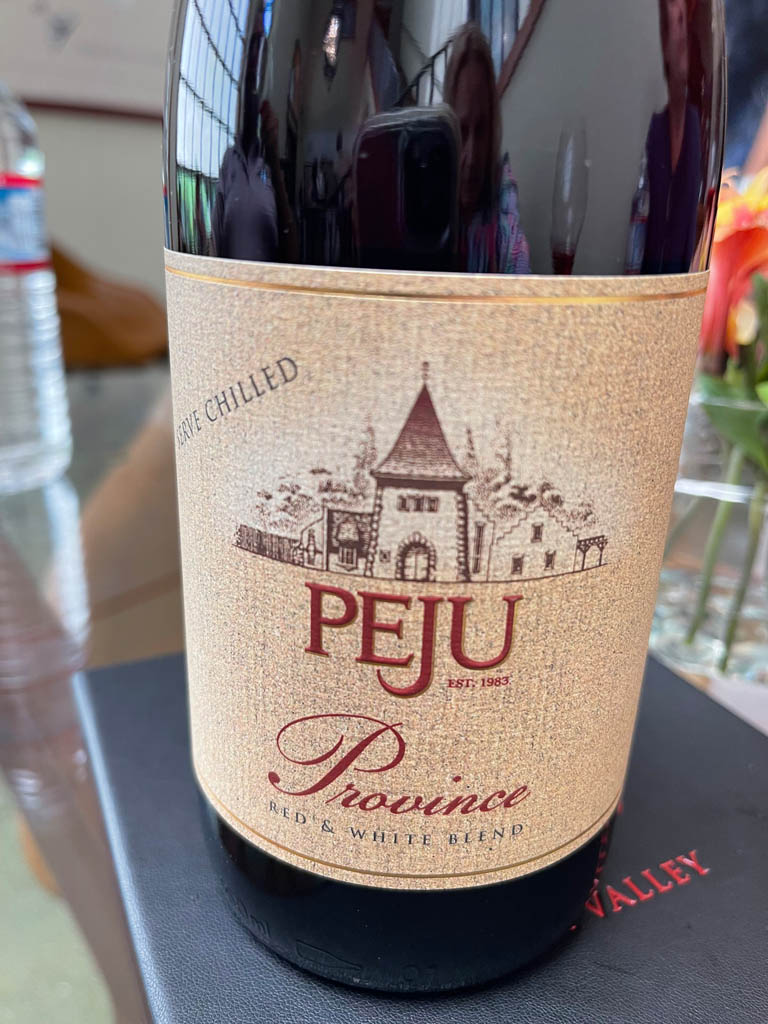
Peju
PEJU Winery in Rutherford began in 1983 when Tony Peju and his wife Herta bought a 30-acre property in Rutherford and moved to Napa Valley to raise their two daughters. Peju began selling wines in the garage at their vineyard estate—a lengthy legal battle ensued and Peju prevailed, leading to Napa County creating the legal definition of what constitutes a winery. The Peju’s pioneered direct to consumer selling and worked to see their dream come true with completion of the iconic PEJU tower in 2003. Today, Winemaker Sara Fowler oversees five vineyards comprising 515 acres. PEJU winery is situated in the heart of the famed Rutherford appellation. The 30-acre certified organic vineyard is planted to five Bordeaux varietals. Rutherford is famous defined by the phrase “Rutherford Dust” which lends notes of cocoa, chocolate and coffee to Cabernet Sauvignon. Our tasting at PEJU unexpectedly turned into THE most entertaining wine tasting any of us have experienced. Enter “Vintertainer” Alan Arnopole, a long-time area musician and regular entertainer at PEJU—we were treated to a private performance of his iconic Napa Rapa, a rap song inspired by the history and winemaking culture of Napa Valley!
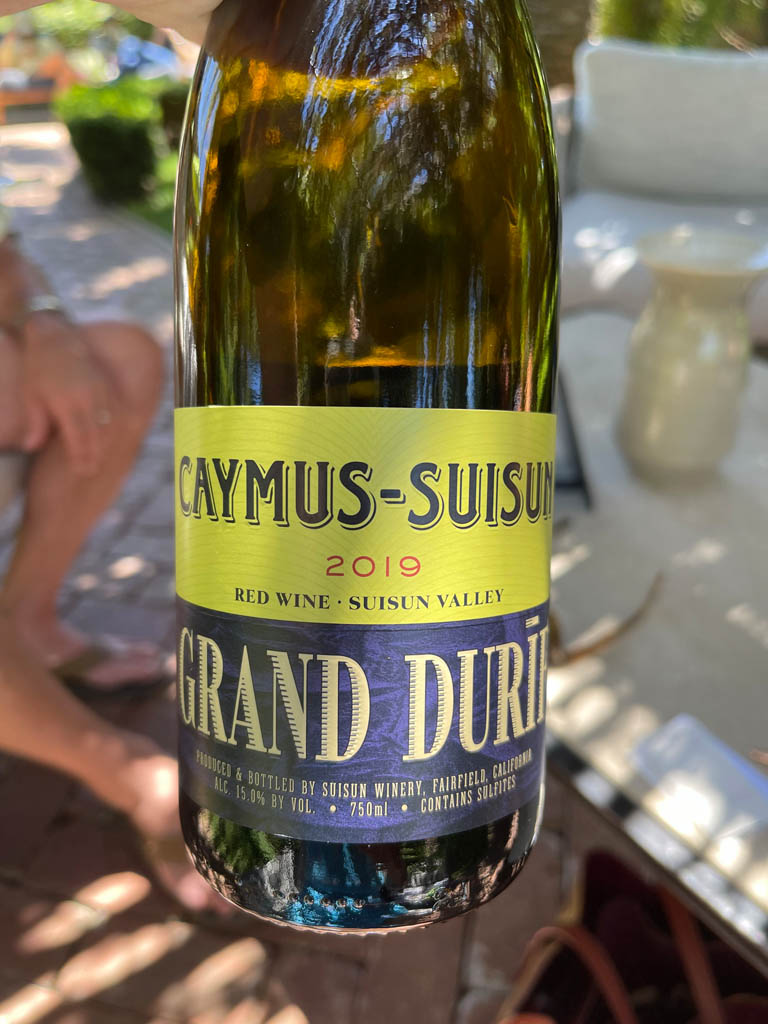
Caymus
Caymus Vineyards, part of the Wagner Family of Wines, started in 1972 by Chuck Wagner and his late parents, Lorna and Charlie, a family of farmers whose roots in Napa dated back to the 1850’s. Today, the family’s two Cabernet Sauvignons, Caymus Napa Valley and Caymus Special Selection, are among the region’s most celebrated wines. Chuck now works alongside two of his children, Charlie and Jenny, and the family produces diverse wines from Napa Valley, other parts of California and beyond. Charlie Wagner now leads Conundrum, showcasing some of the best wine regions California has to offer, as well as Mer Soleil Chardonnays from the Santa Lucia Highlands and Monterey County, as well as Red Schooner, a rich, dark Malbec made from grapes grown in the Andes Mountains of Argentina, shipped chilled to Caymus and produced in the supple Caymus style. The newest addition to the Wagner Family of Wines is Caymus-Suisun. Only 30 minutes from Napa, Suisun Valley is still largely undiscovered. We enjoyed the 2019 Caymus-Suisun Grand Durif, a Petite Sirah, the most widely grown grape in Suisun. Jenny, Chuck’s daughter, is winemaker for Emmolo, which is named for her maternal side of the family, and offers a fresh take on Sauvignon Blanc and Merlot, as well as Emmolo Sparkling, a wine worthy of celebrating that is serious, fresh and creamy.
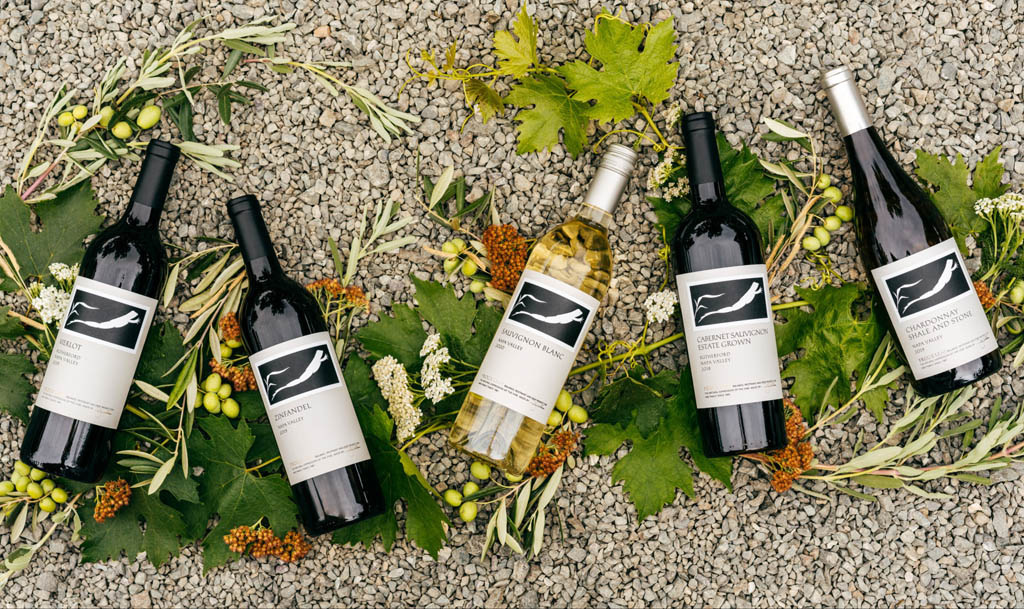
Frog’s Leap
Frog’s Leap, now in its fourth decade, is located in the heart of Rutherford, and is the life’s work of John Williams. While an undergrad at Cornell University, he made the trip to Napa via Greyhound Bus where he met Larry Turley while camping on his property, a former frog farm. John went to work at Stag’s Leap Wine Cellars and helped bottle the ’73 Stag’s Leap Cabernet, which won the famed Paris Tasting! John and Larry coined the name Frog’s Leap and sold their motorcycles to raise the cash to launch their winery. Frog’s Leap began in 1981, producing Sauvignon Blanc and Zinfandel. In 1993 Larry sold his interest in Frog’s Leap to the Williams family to start Turley Wine Cellars. John and wife Julie found a new location for the winery, at the current 40-acre site with its historic Red Barn in Rutherford. Over the years, Frog’s Leap has become a favorite among wine enthusiasts, and one of the most recognized wine labels.
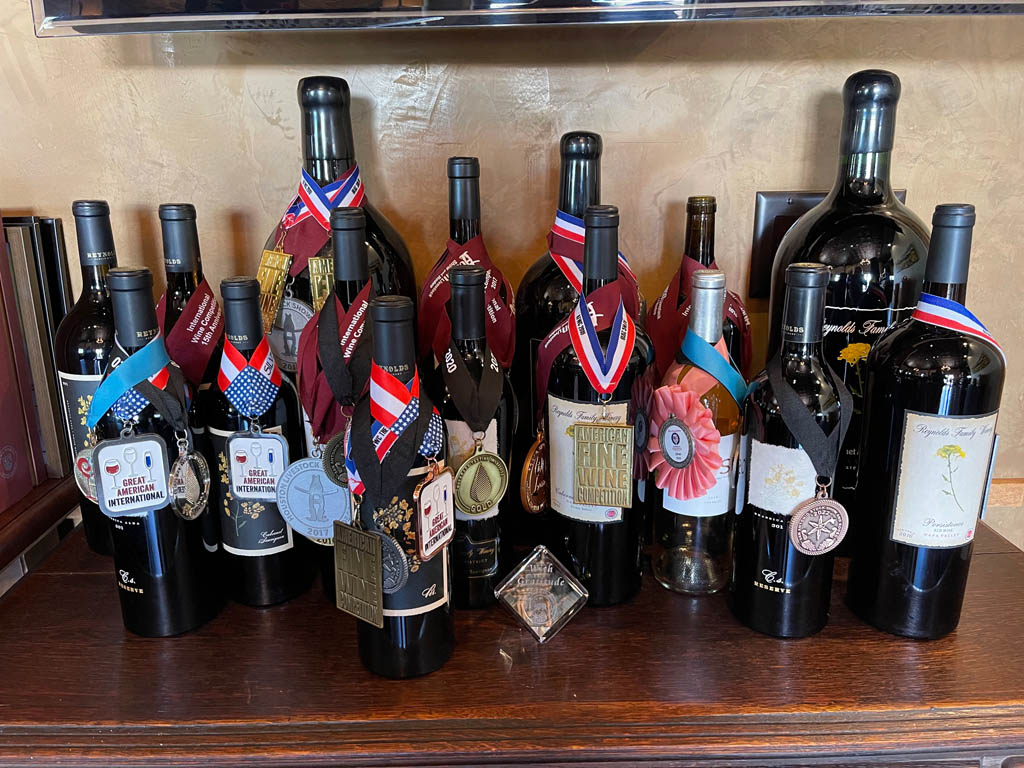
Reynolds
Reynolds Family Winery in the Stag’s Leap District began when Steve and Suzie Reynolds purchased a chicken farm in 1995 after relocating to Napa from Stockton, CA. Steve continued his work as a dentist, initially planting the property with Cabernet Sauvignon hoping to make a few cases and sell some fruit. It wasn’t long before the couple decided to go all in. Steve sold his dental practice and they began sourcing fruit and started construction on the winery. In 1999, they released their first vintage. In 2011, their Cabernet Sauvignon was named #10 wine in the world by Wine Enthusiast!
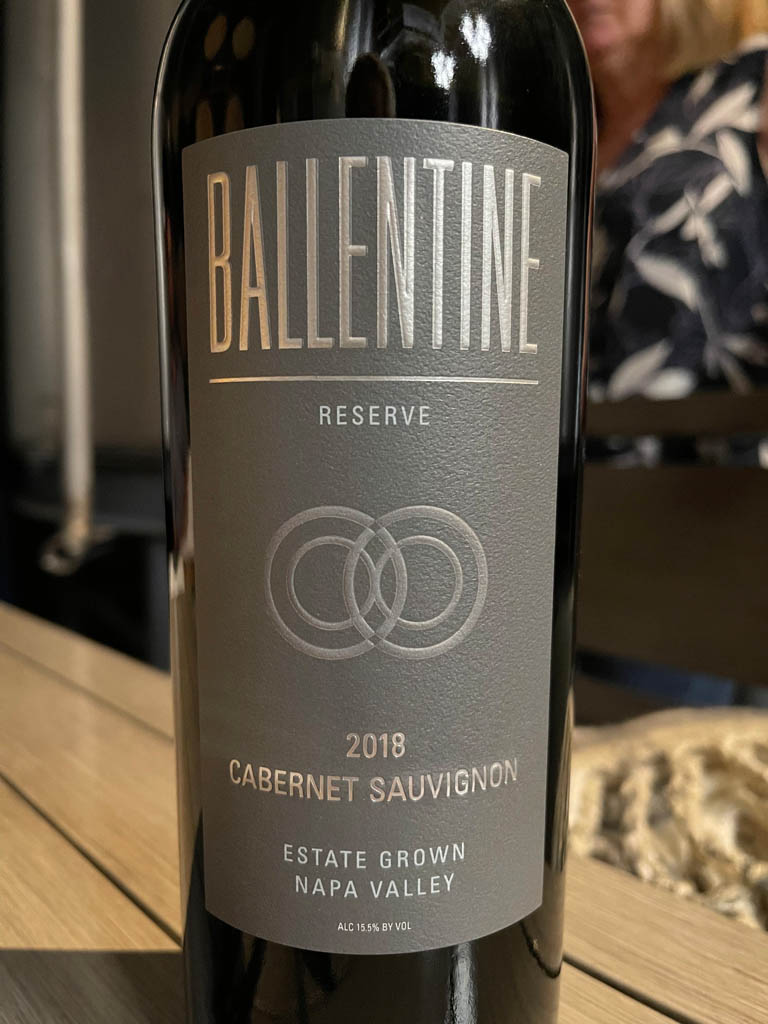
Ballentine
Ballentine Vineyards in St. Helena has been family-owned since 1906, representing four generations. As a winery with deep roots in Napa, Ballentine is a farm-to-bottle winery, growing all of their own grapes to make limited truly exclusive Napa Valley wine on 80 acres, specializing in Zinfandel and Cabernet Sauvignon. The winery was designed to collect the rainwater from the rooftop and be used for both frost protection and irrigation. The story of the Ballentine and Pocai Families began in Lucca, Italy, and Omagh, County Tyrone, Ireland. The families married, combining their vineyards. Today, Betty Pocai Ballentine along with son Frank Ballentine continue to produce delicious award-winning wines. Along with winemaker Bruce Devlin, they constantly experiment with their 100+-year-old vineyards to discover their ever-evolving potential to create new gems from each vintage.
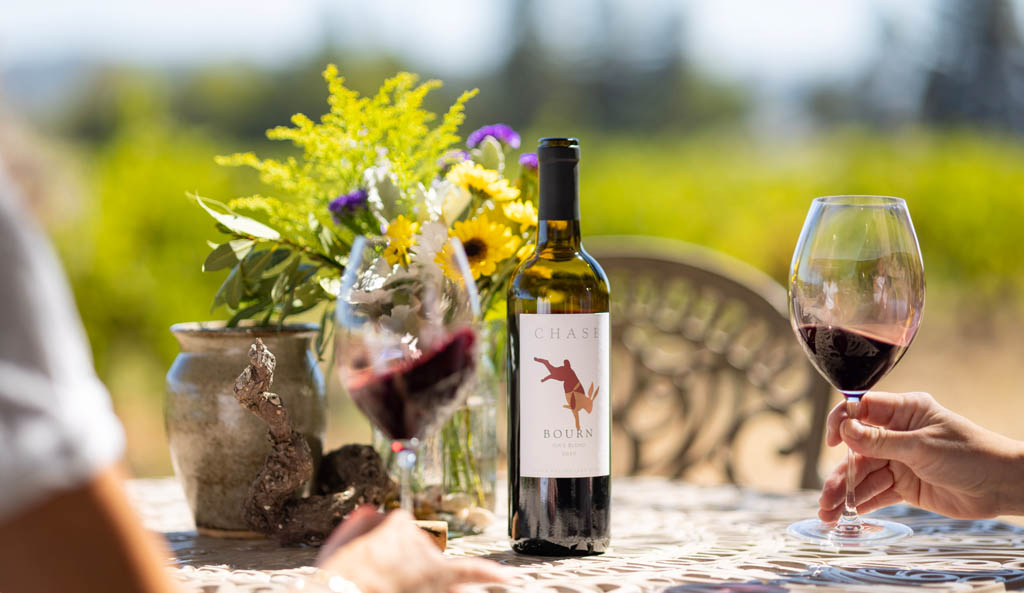
Chase Cellars
Chase Cellars in St. Helena has been in the Chase family for five generations. In 1849 Captain George Chase sailed to San Francisco in search of gold. When he came upon shore, George wrote to his friend and business partner William Bourn, saying “San Francisco promises to be a most lucrative center for men of imagination and business enterprise.” William, who had an eye for good deals and ventures, couldn’t refuse and traveled west to work with George, and became a successful banker. He was so successful that the business community coined the phrase “Bourn Luck.” The property, now known as Hayne Vineyard, was purchased in 1872 by William Bowers Bourn and his wife Sarah Esther Chase Bourn. Today, the winery is run by Katie Hayne Simpson, Vintner (great-great granddaughter of William and Sarah). Over 115 years old, Simpson says their vines “are wise and storied—they are the heartbeat of Hayne Vineyard, and the soul of the wines we produce.” Russell Bevan, winemaker at Chase Cellars has a countless number of 90-to-100-point scores from the world’s most respected critics.
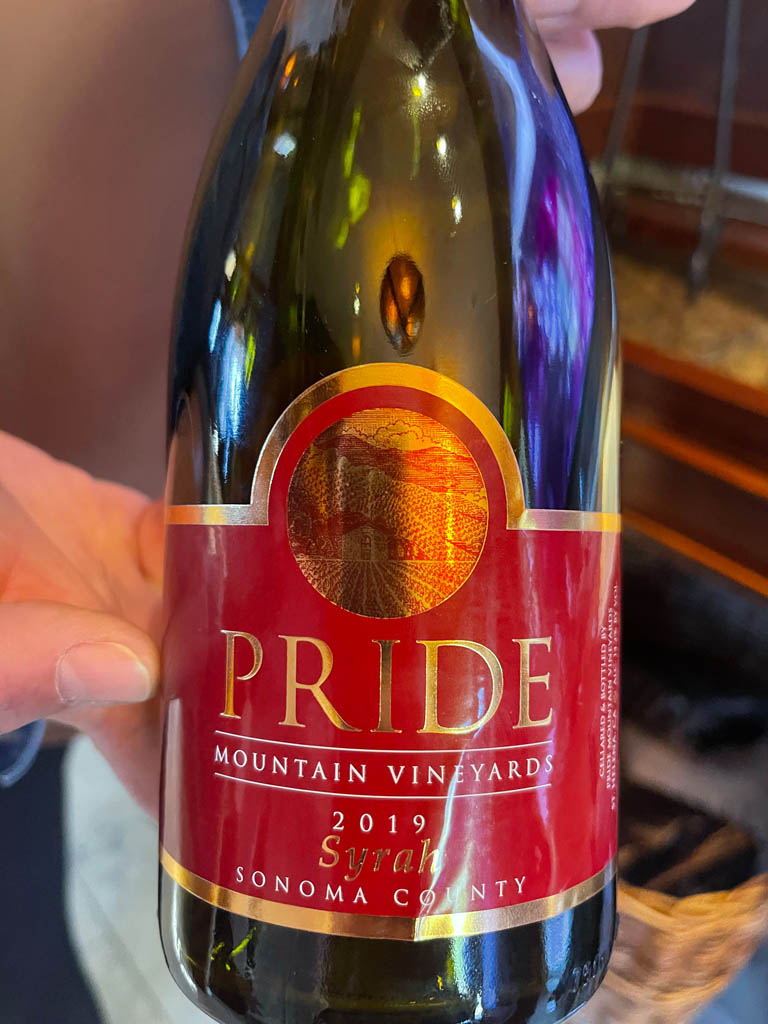
Pride Mountain Vineyards, a 235-acre
estate with 85 vineyard acres is located some 2,000 feet above the floor of Napa Valley on Spring Mountain—one of the most unique winery locations in both Napa and Sonoma (it spans both counties, with a line of demarcation through the parking lot), an estate previously named “Summit Ranch.” Due to their elevation and exposure, these vines receive roughly 27% more ultraviolet light resulting in tannin and phenolic antioxidant levels in their red grapes that are measured to be roughly 25% higher than on the valley floor, lending to the “mountain character” of Pride’s red wines. It is also cooler than on the floor, meaning the fruit does not ripen as fast, allowing for nice acidity levels. Founders Jim and Carolyn Pride met in high school, and after Jim’s successful career as a dentist and founder of The Pride Institute, which teaches dentists how to manage and build their practices, the couple purchased the historic Summit Ranch and began restoring the estate and making wine until Jim passed away in 2004. Since, their children stepped in making Pride a true family winery.
We are thankful for the wonderful friendships we made in our travels through Napa and Sonoma, and look forward to returning to discover and enjoy more great wineries, restaurants, and places to stay. We raise a glass and toast the amazing folks whose hard work and dedication make Napa and Sonoma among the top wine destinations in the world. These great folks have endured a lot lately, between the fires and COVID, and are ready to welcome you! Bon Voyage et Santé! ☐
Recommended Wine Country Restaurants
Bistro Jeanty (Yountville)
Bottega Napa Valley (Yountville)
Bravas Bar De Tapas (Healdsburg)
Brix (Napa)
Bouchon (Yountville)
Celadon (Napa)
Cole’s Chop House (Napa)
The Girl and The Fig (Sonoma)
Gott’s Roadside (Multiple locations)
La Toque (Napa)
Mustard’s Grill (Napa)
Oakville Grocery (Oakville)
Rutherford Grill (Rutherford)
The Restaurant at Auberge du Soleil (Rutherford)
Single Thread (Healdsburg)
Valette Restaurant (Healdsburg)
Willi’s Seafood & Raw Bar (Healdsburg)

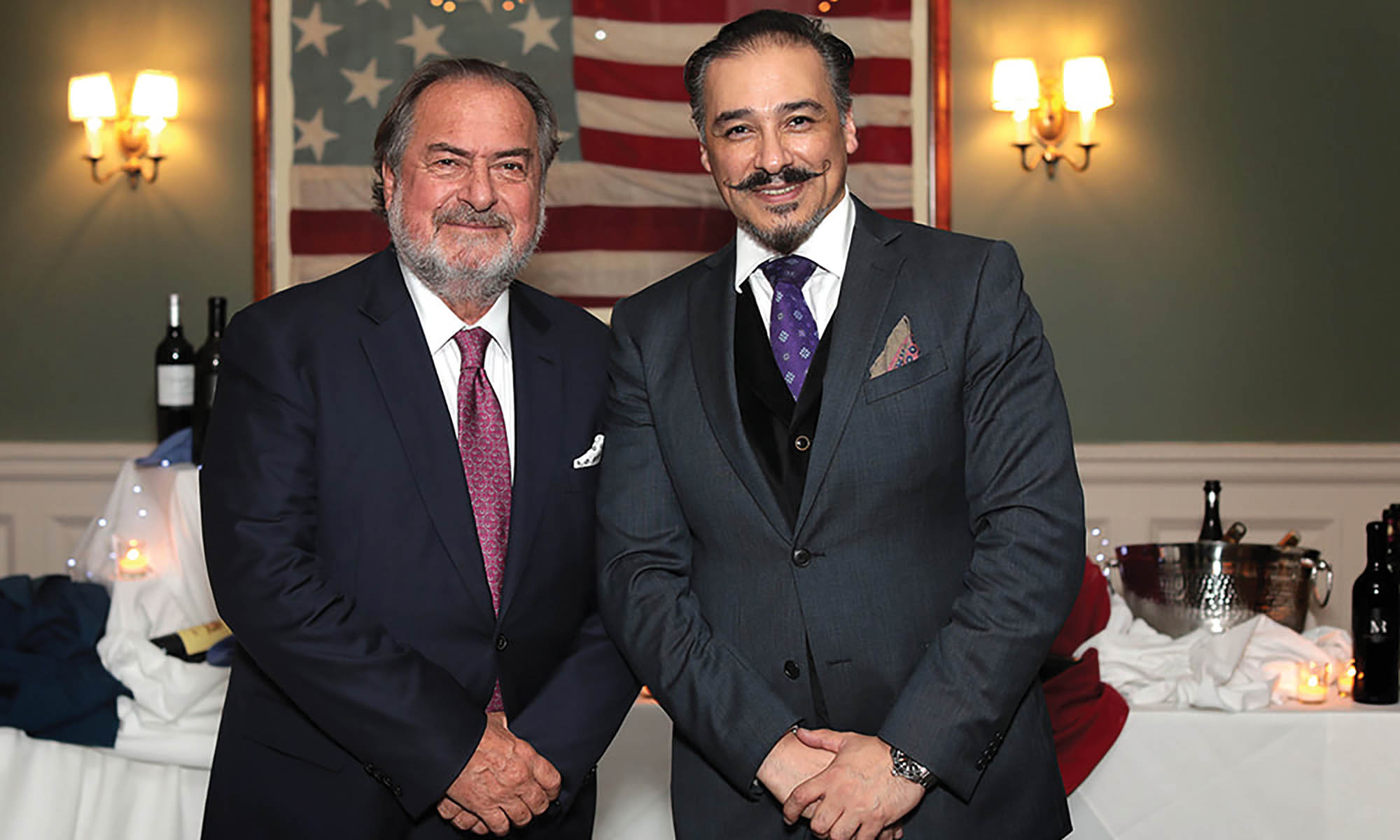
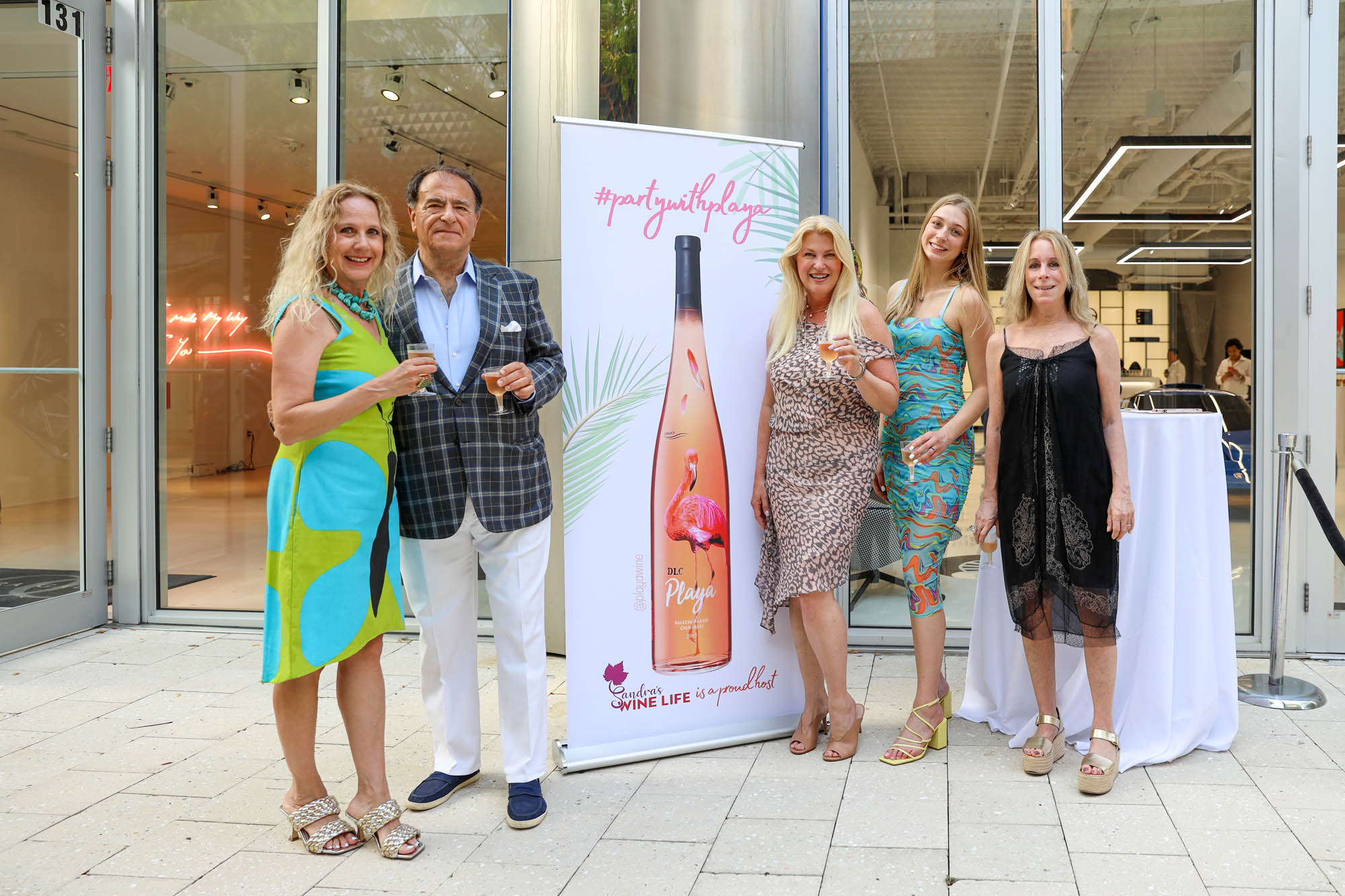
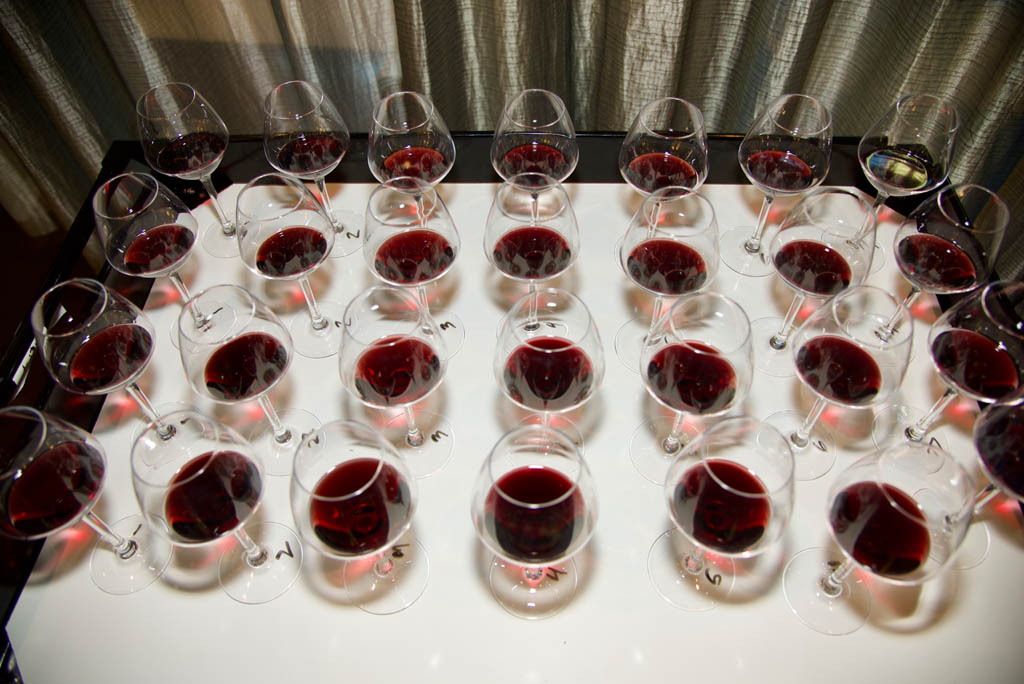
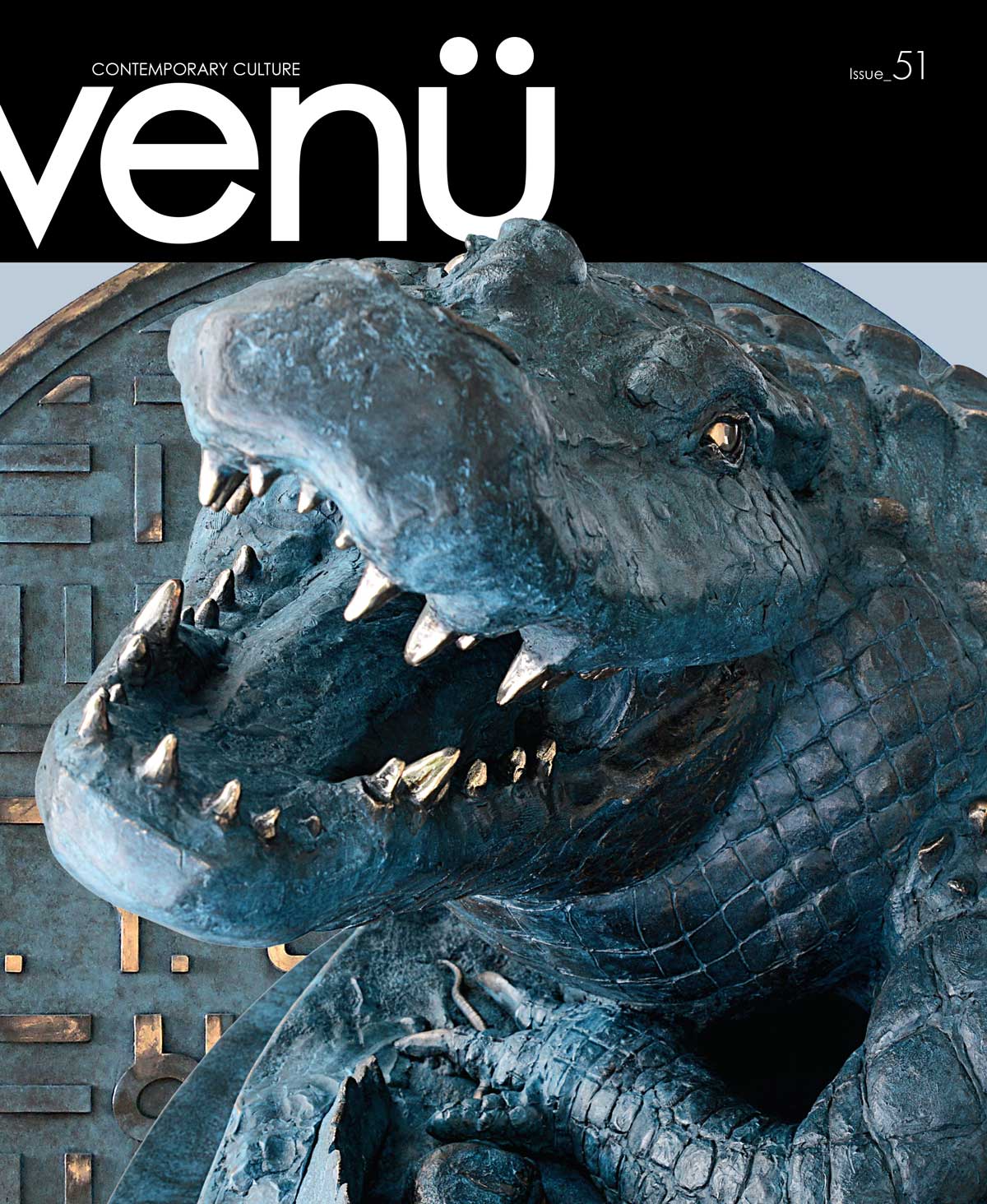
Leave a Reply